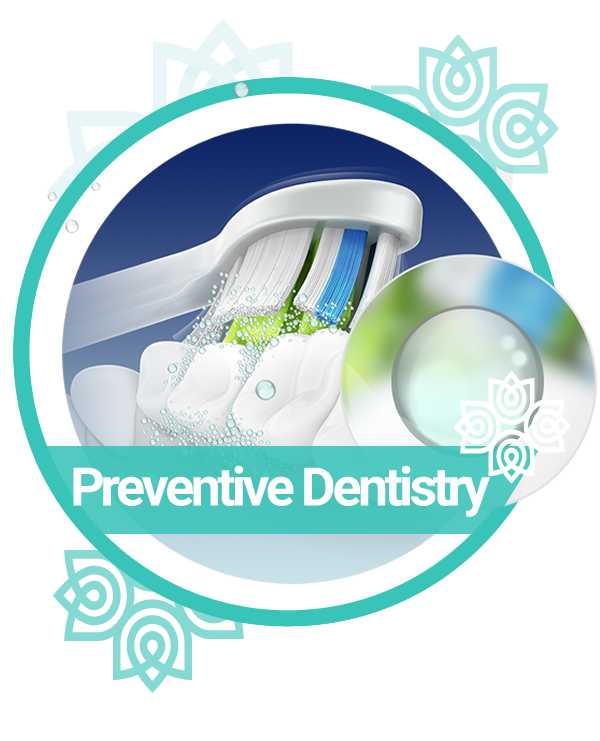
PREVENTIVE DENTISTRY
PREVENTIVE DENTISTRY IS THE PRACTICE OF CARING FOR YOUR TEETH TO KEEP THEM HEALTHY TO AVOID CAVITIES AND GUM DISEASE.
Preventive dentistry emphasizes the importance of ongoing hygiene procedures and daily practices to prevent tooth decay and other dental diseases and conditions. Effective preventive dentistry combines at-home oral care by patients with chairside treatments and counseling by dental professionals. For example, the American Dental Association (ADA) recommends a minimum of two dental checkups each year for professional cleaning and management of any developing conditions. Adhering to this recommendation can help your dentist stop dental disease in its earliest stages, protecting your smile and limiting your expense.
REGULAR CLEANING vs. DEEP CLEANING
A regular cleaning, also called a prophylaxis, is a routine procedure that focuses on cleaning the visible surfaces of your teeth and just below the gumline. It’s a vital part of maintaining your oral hygiene and preventing common issues like cavities and gum inflammation.
However, in some cases, a deeper level of cleaning is needed. This is where scaling and root planing come in. Unlike a regular cleaning, scaling and root planing target the spaces below the gumline where harmful bacteria and plaque can accumulate. These procedures are typically recommended when there’s evidence of gum disease (gingivitis or periodontitis).
Scaling involves removing the plaque and tartar buildup from the tooth surfaces, both above and below the gumline. This step is essential for preventing the progression of gum disease, which can lead to gum recession, bone loss, and even tooth mobility if left untreated.
Root planing, on the other hand, focuses on smoothing out the tooth roots. This helps eliminate rough areas where bacteria can easily attach, promoting healthier gum attachment and reducing the likelihood of future infections.
Scaling and root planing are recommended when there are signs of gum disease, such as bleeding gums, gum inflammation, pocket formation (deep spaces between the gums and teeth), and potential bone loss seen in X-rays. These procedures aim to remove the source of infection, reduce inflammation, and give your gums a chance to heal properly.













